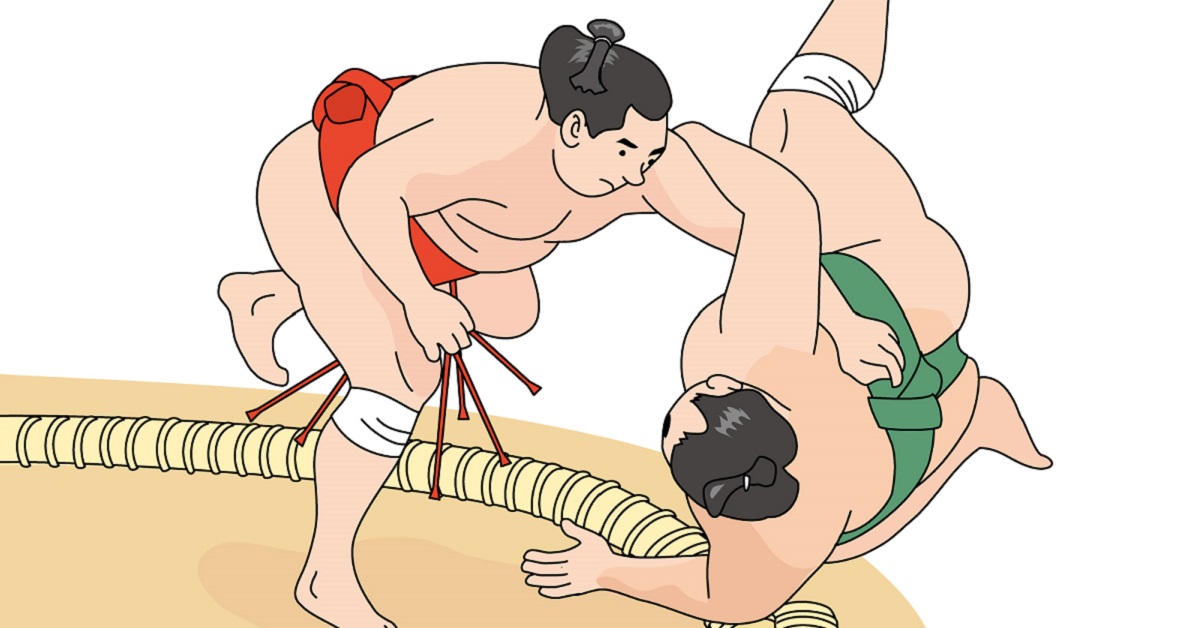Among the many winning techniques in sumo, shitate-nage holds a special place. It is often the key to dramatic upsets, where smaller wrestlers defeat giants through clever body mechanics and sharp timing. For those new to the sport, shitate-nage provides one of the clearest windows into the strategic and technical beauty of sumo.
What is Shitate-nage
Shitate-nage is read as “shitate-nage.” The word “shitate” means to grab the opponent’s belt from underneath. The wrestler inserts the inside arm deeply under the opponent’s armpit, grips the mawashi, and creates a fulcrum. By rotating the hips and shifting body weight, the opponent’s balance collapses.
It is known as a technique that can overturn size differences. When a smaller rikishi topples a giant opponent, the crowd erupts in excitement.
| Technique | Reading | Main Feature | Effective Timing |
|---|---|---|---|
| Shitate-nage | Shitate-nage | Grabs mawashi from underneath with inside arm | When opponent is moving forward or overextended |
From this table, it is clear that “depth of the grip” and “hip rotation” determine success.
Basic Movements of Shitate-nage
The basic flow is as follows:
- Insert the inside arm under the opponent’s armpit and grab the mawashi.
- Lower the hips to stabilize balance.
- Use the arm as a fulcrum while rotating the hips and torso to disrupt balance.
- The moment the opponent becomes light, apply a full rotation to throw them.
The most important points are to keep the center of gravity low and to avoid relying only on arm strength. The power of the throw comes from the lower body; the arm serves only as a lever.
| Movement | Key Point | Common Mistake |
|---|---|---|
| Insert inside arm | Deep grip, squeeze the mawashi | Too shallow, easily broken |
| Lower hips | Keep knees flexible and grounded | Standing too tall and losing balance |
| Rotate body | Start from hips and move up | Only shoulders rotate, making throw shallow |
| Finish throw | Attack the moment opponent floats | Late timing, ineffective |
Tips for Success in Shitate-nage
The secrets of success can be summarized into three pillars:
- Keep the center of gravity low
- Move the whole body in coordination
- Read the timing of the opponent’s movement
Though simple in appearance, mastering these requires repetitive practice until they become second nature. For foreign spectators, similarities to judo or wrestling throws make the concept easy to grasp, but sumo’s unique use of the mawashi and body weight transfer sets it apart.
| Key to Success | Explanation |
|---|---|
| Keep center of gravity low | Lower hips to stay stable and efficient |
| Use whole body | Do not rely on arms, move hips and legs together |
| Seize timing | Attack when opponent pushes forward |
Common Mistakes and Corrections
While shitate-nage is effective, it is also prone to mistakes. Below is a table summarizing common errors and improvements.
| Mistake | Cause | Correction |
|---|---|---|
| Using only arms | Lack of hip rotation | Focus on whole-body movement |
| Losing balance first | Standing too tall | Lower hips for stability |
| Failure to finish | Late timing | Attack at forward motion |
| Grip slips | Shallow hold on mawashi | Open thumb outward and wrap firmly with four fingers |
The key takeaway is that “it is not about brute force, but about refined technique.”
Comparison with Other Throwing Techniques
Sumo has many throwing techniques, each suited for different situations.
| Technique | Feature | Best Situation |
|---|---|---|
| Shitate-nage | Grab mawashi from underneath and throw | When opponent charges forward |
| Uwate-nage | Grip from above and rotate widely | When swinging opponent outward |
| Sukui-nage | Scoop up without holding belt | When inside grip is shallow |
| Kote-nage | Use opponent’s arm to throw | When grip is broken |
From this comparison, it becomes clear that shitate-nage is a highly reliable throw, especially advantageous for smaller wrestlers.
Viewing Points and Tips for Beginners
When watching a bout, the key points to observe are:
- How deep the inside grip is
- Whether the wrestler’s hips are lower than the opponent’s
- Whether the foot turns outward before the throw
- Whether the wrestler maintains posture after the throw
| Viewing Focus | Explanation |
|---|---|
| Depth of grip | Deeper grip leads to stronger throw |
| Hip position | Lower hips create advantage |
| Foot direction | Outward step opens throwing angle |
| Posture after throw | Stability ensures clear victory |
For beginners or foreign audiences, simply focusing on hip height and foot angle makes predicting the winner easier.
Conclusion
Shitate-nage is a fundamental yet highly technical technique in sumo. Success requires depth of grip, low hips, full-body coordination, and sharp timing. The moments when a small rikishi topples a giant are among the most thrilling in sumo.
For beginners and foreign spectators, paying attention to the inside grip, hip height, and foot angle allows for a deeper appreciation of sumo’s strategic and technical brilliance.





コメント